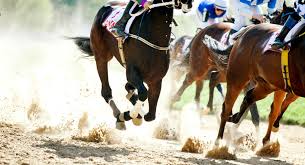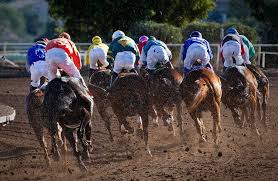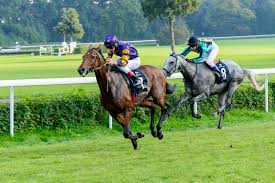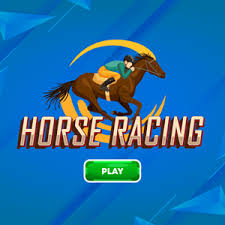AUTHOR: BERRY
Cricwin Profitable Horse Racing Betting Systems: A Comprehensive Guide
Horse racing betting[1] has long been an exciting way for bettors to test their skills, strategies, and luck. With the right approach, you can significantly increase your chances of making profits while enjoying the thrill of the races. Cricwin, a leading online betting platform[2], offers various profitable betting systems that can help bettors maximize their potential returns. In this guide, we will dive into some of the most popular horse racing betting systems available on Cricwin, how they work, and tips to enhance your betting strategy for more profitable outcomes.
Why Use Betting Systems in Horse Racing?

While horse racing is a sport [3]of chance, using a proven betting system can provide structure to your wagering strategy and help mitigate risks. Betting systems allow you to make data-driven decisions, set realistic goals, and avoid emotional or impulsive betting. Instead of betting randomly, betting systems give you a structured way to evaluate races, manage your bankroll, and improve your overall betting performance.
The key to success in horse racing betting [4]lies in the selection of the right betting system. Cricwin offers several strategies that have been used by professionals [5]for years, each with varying degrees of complexity and risk. Below, we explore some of the most profitable systems you can use when betting on horse races at Cricwin.
Popular Cricwin Profitable Horse Racing Betting Systems
1. The Martingale System
One of the most popular and straightforward betting systems, the Martingale System, is used by bettors who aim to recover their losses after a losing bet. The strategy is simple: double your bet after every loss so that when you eventually win, you will recover all your previous losses along with a profit equal to your original stake.
How it works:
- Start by placing a small bet on a horse.
- If you lose, double the size of your next bet.
- Continue doubling your bets after each loss until you win.
- Once you win, you return to your original bet size and start the cycle again.
Pros:
- The Martingale System is easy to implement and can lead to big wins when used correctly.
- It’s ideal for those who can afford to take on large risks.
Cons:
- It can quickly escalate the size of your bets, leading to high losses if a losing streak continues.
- The system works best with even-money bets (such as win/place bets) and doesn’t guarantee success.

2. The Fibonacci System
The Fibonacci System is a more conservative betting strategy compared to the Martingale. It’s based on the Fibonacci sequence, a series of numbers in which each number is the sum of the two preceding ones. This system allows you to gradually increase your bet after each loss, minimizing risk compared to the Martingale approach.
How it works:
- Start by betting a small amount, following the Fibonacci sequence: 1, 1, 2, 3, 5, 8, etc.
- After a loss, you move to the next number in the sequence.
- After a win, you move back two steps in the sequence, lowering your bet.
- The goal is to recover losses slowly while managing risk more effectively.
Pros:
- Less aggressive than the Martingale, making it suitable for bettors with a smaller bankroll.
- It offers a structured way to recover losses over time.
Cons:
- It may take longer to recover losses due to the gradual increase in bet size.
- Requires patience and discipline to be effective.
3. The Kelly Criterion
The Kelly Criterion is a betting system based on maximizing your potential growth over time by adjusting your bet size in proportion to your perceived edge in a race. Unlike the Martingale or Fibonacci systems, the Kelly Criterion involves betting a fraction of your bankroll based on the odds of the horse you are backing and the probability of that horse winning.

How it works:
- Calculate your “edge” by determining the probability of a horse winning and comparing it with the odds offered by Cricwin.
- Use the formula: f = (bp – q) / b*, where:
- f* is the fraction of your bankroll to bet.
- b is the decimal odds (minus 1).
- p is the probability of the horse winning.
- q is the probability of the horse losing (1 – p).
- Bet the resulting fraction of your bankroll.
Pros:
- Allows you to maximize profits by adjusting bets based on your perceived advantage.
- Less risky than flat betting and more sophisticated than basic systems.
Cons:
- Requires accurate judgment and analysis of each race, which can be time-consuming.
- If your calculated edge is incorrect, you risk losing money.
4. The Flat Betting System
The Flat Betting System is one of the simplest betting strategies, where you bet the same fixed amount on each race, regardless of the outcome of previous bets. This strategy is based on consistency and controlled risk, helping bettors avoid emotional decisions while preserving their bankroll.
How it works:
- Decide on a fixed amount to bet on each race, such as 1% to 5% of your bankroll.
- Place the same bet size on every race.
- Continue this pattern regardless of wins or losses.
Pros:
- Simple and effective for beginners or those with smaller bankrolls.
- Helps control risk and avoid large losses from chasing big wins.
Cons:
- Slower growth compared to more aggressive systems.
- Doesn’t take advantage of the odds or perceived value in a race.
5. The Each-Way Betting System
Each-way betting is a popular strategy in horse racing, where bettors place two separate bets: one on the horse to win and another on the horse to place (typically in the top 3 or top 4 positions, depending on the race). This system increases your chances of winning by providing a fallback option if your chosen horse doesn’t win but still places.
How it works:
- Place a bet on a horse to win.
- Place a second, smaller bet on the same horse to place.
- If the horse wins, you collect both the win and place payouts.
- If the horse places but does not win, you collect the place payout.
Pros:
- Increases your chances of collecting winnings, even if the horse doesn’t win.
- Provides a more balanced approach by betting on both the win and place.
Cons:
- The overall payout is lower, as you’re betting on two outcomes.
- You need to be strategic about which horses you place each-way bets on.
How to Maximize Your Profits with Betting Systems on Cricwin
1. Bankroll Management
Regardless of the system you choose, effective bankroll management is key to long-term success in horse racing betting. Set a budget for your betting activities and stick to it. Betting within your means ensures you can weather losing streaks and take advantage of profitable opportunities.
2. Research and Analysis
To maximize your chances of winning, always conduct thorough research on the horses, jockeys, trainers, and track conditions before placing any bets. Cricwin provides detailed race information and live statistics, which can help inform your decisions.
3. Use Multiple Systems Wisely
Mixing different betting systems might help you create a more flexible and well-rounded strategy. For example, you can combine flat betting with the Each-Way system to increase both consistency and coverage. However, avoid trying too many systems at once, as it can complicate your betting and affect your discipline.
Conclusion
Cricwin offers an exciting platform for horse racing enthusiasts to try various betting systems that suit their risk tolerance and betting preferences. From the aggressive Martingale System to the conservative Fibonacci Strategy, there’s a method for everyone. The key to success lies in understanding each system’s strengths and weaknesses, conducting careful research, and managing your bankroll effectively.
By applying these strategies, you can enhance your chances of making profitable bets, all while enjoying the thrilling experience that horse racing offers. Whether you’re betting on virtual races or live events, Cricwin ensures that you have the tools you need to make informed decisions and improve your betting outcomes.
FAQ
1. What is the Martingale betting system in horse racing, and is it profitable?
The Martingale system involves doubling your bet after every loss, with the goal of recovering previous losses when you eventually win. While it can be profitable in the short run, it’s risky because a prolonged losing streak can quickly escalate your bet size, leading to significant losses. It’s important to use this system with caution and ensure you have the bankroll to handle potential losses.
2. How does the Fibonacci betting system work, and why is it considered less risky?
The Fibonacci system follows the Fibonacci sequence, where each number is the sum of the previous two. After a loss, you increase your bet according to the sequence, but after a win, you move back two steps in the sequence. This system is considered less risky than Martingale because it increases your bets more gradually, providing more time to recover from losses. However, it still carries risks if you experience multiple consecutive losses.
3. What is the Kelly Criterion, and how can it help maximize profits in horse racing betting?
The Kelly Criterion is a more advanced betting system that adjusts your bet size based on your perceived advantage in a race. It calculates a fraction of your bankroll to bet by evaluating the odds and your estimation of the horse’s chances of winning. This system aims to maximize growth while minimizing risk, but it requires accurate assessments of each race’s probability, making it ideal for more experienced bettors.
4. Can I use the Flat Betting System on Cricwin, and is it effective?
Yes, the Flat Betting System is a simple and effective way to bet consistently. With this system, you wager the same fixed amount on each race, regardless of previous wins or losses. This strategy helps manage your bankroll and reduces the risk of large losses, making it ideal for beginners or those with a smaller bankroll. While it may result in slower growth, it provides stability and discipline.
5. What is each-way betting, and how can it increase my chances of winning in horse racing?
Each-way betting involves placing two separate bets on a horse: one for the horse to win and one for the horse to place (finish in the top 3 or 4, depending on the race). This system increases your chances of winning because even if your horse doesn’t win, you can still collect a payout if it places. While the potential payout is lower, it offers a safer approach, especially in competitive races.
GET IT TOUCH
Error: Contact form not found.
